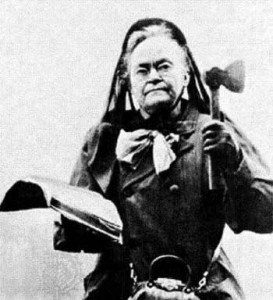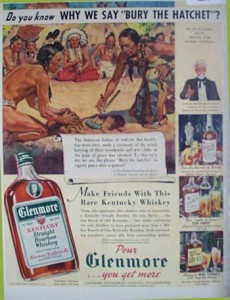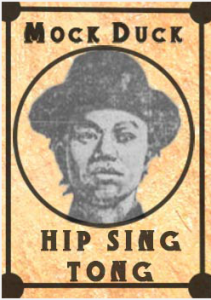The three idiomatic expressions above – one Native American in origin, one Chinese-American, and one associated with the practices of American politics – have absolutely nothing to do with the story of George Washington, his little hatchet, a cherry tree, and not telling lies. Or, for that matter, of the tale of Carrie A. Nation’s hatchet-swinging, tavern-busting antics.
I thought I’d start with two all-American images just to remind readers how central hatchets are to our shared cultural understanding.
But I digress.


TO BURY THE HATCHET – ORIGIN
The idiom to bury the hatchet means to make peace between opposing sides.

The expression to bury the hatchet appears to be linked to a bona fide Native American tradition, with its earliest appearance in written English occurring in 1680.
Years before he became known for presiding over the notorious Salem witch trials, (for which he later apologized), Justice Samuel Sewall wrote that in a meeting of Algonquin Indian chiefs with English Army Major John Pychon in Albany, both sides “… came to an agreement and buried two Axes in the Ground; one for [the] English, another for themselves; which ceremony to them is more significant & binding than all Articles of Peace …”
While there were other later instances of Native Americans literally burying hatchets as part of a peace ceremony, the expression soon thereafter began to be used figuratively in the way that it is still employed till this day.
HATCHET MAN – ORIGIN

Hatchet man today is a term used to describe someone who specializes in and is hired or assigned to do odious tasks.
As in … “Don’t you get it? Stevens is a certified hatchet man, sent by the home office to cut costs, reorganize our group, and ultimately fire people.”
The term hatchet man was originally used to describe real-life enforcers and assassins during the Tong Wars, which occurred in North America’s big cities starting in the late 19th century and which, for the most part, ended by the late 1930s. ”Tong” is a Chinese word for a type of fraternal, sometimes criminal, society still operative in some Chinese communities today.

Sai Wing Mock (a.k.a. “Mock” Duck) was called the “mayor” of NYC’s Chinatown in the early part of the 20th century. As leader of the Hip Sing tong, Mock went to war against the much larger On Leong tong, and it was reported that he imported a crack team of hatchet men from San Francisco to engage his enemies.

As the tong wars declined, the meaning of hatchet man (or later, hatchet woman) shifted from a literal job description to an identifier of anyone who is brought into a political campaign, business enterprise, or institution with the primary mission of wreaking havoc. Nasty business, indeed.

HATCHET JOB
Closely derived from the modern meaning of hatchet man, the term hatchet job is used to negatively describe a severe political or policy criticism which usually appears in print, but which can also be found in other media as well. The ultimate intention of a hatchet job is to severely injure or even ruin the reputation of its target, be it a person, group, or idea.
